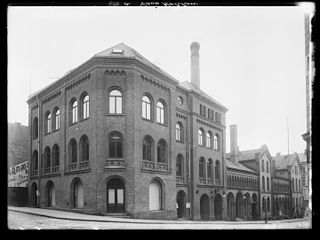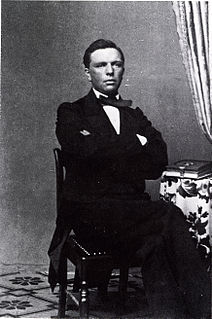
Grünerløkka is a district of the city of Oslo, Norway. Grünerløkka became part of the city of Oslo in 1858. Grünerløkka is a traditional working class district, but from the late 20th century a gentrification process has taken place in the area. Although it is located in the East End, it has a relatively high price level today compared to other East End areas.
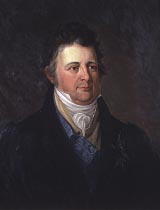
Johan Caspar Herman Wedel Jarlsberg was a Norwegian statesman and count. He played an active role in the constitutional assembly at Eidsvoll in 1814 and was the first native Norwegian to hold the post of governor during the union with Sweden.
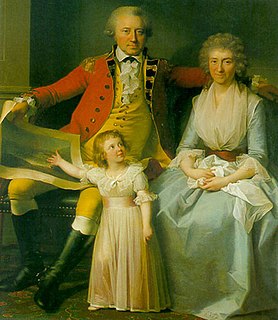
Peder Anker was a prominent Norwegian landowner, businessman and politician. He served as Prime Minister of Norway from 1814 until 1822.

Peter Andreas Amundsen Morell was a Norwegian farmer and politician.

Henrich Herman Mejer Foss was a Norwegian military officer and elected official.

Frederik Holst was a Norwegian medical doctor. He is regarded as an important pioneer in medicine in Norway.
Eyvind Getz (1888–1956) was a Norwegian barrister and mayor of Oslo, Norway.
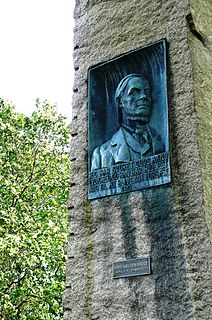
Bredtvet is a neighborhood in the borough of Bjerke in Oslo, Norway.
Trygve Nilsen was a Norwegian civil servant and Mayor of Oslo with the Labour Party.

Hegdehaugen is a neighbourhood in the borough Frogner of Oslo, Norway. It is located in the West End between Homansbyen and Majorstuen. The name origins from the man's name Heide.

Fredrik Glad Balchen was a Norwegian deaf teacher.

Hieronymus Heyerdahl was a Norwegian lawyer, administrator and politician for the Conservative Party. He served as mayor of Oslo and was associated with the development of the new Oslo City Hall.

Paul Botten-Hansen was a Norwegian librarian, book collector, magazine editor and literary critic.
Jacob Juel was a Norwegian timber trader and civil servant. He was born in Christiania as the son of timber trader and civil servant Hans Juel and Else Sophie Dorothea Rasch. He was the brother of Maren Juel. He was assigned the title of Zahlkasserer in 1774. He also owned large land properties and a shipyard. He was arrested in 1784, after a deficience in the cash balance of 556,000 Rdlr, but eventually managed to escape and later lived in exile in Sweden.

Arno Berg was a Swedish born, Norwegian architect and antiquarian. Berg is particularly associated with the preservation of historic building in Oslo.

Nicolay August Andresen was a Norwegian banker. He was born in Christiania, a son of Nicolai Andresen and Engel Johanne Christiane Reichborn. He was a brother of merchant and factory owner Johan Henrik Andresen, and of silver mines manager Carl Ferdinand Andresen.

Honoratus Halling was a Norwegian priest, magazine editor and non-fiction writer.

Jacob Rasch was a Norwegian educator.





